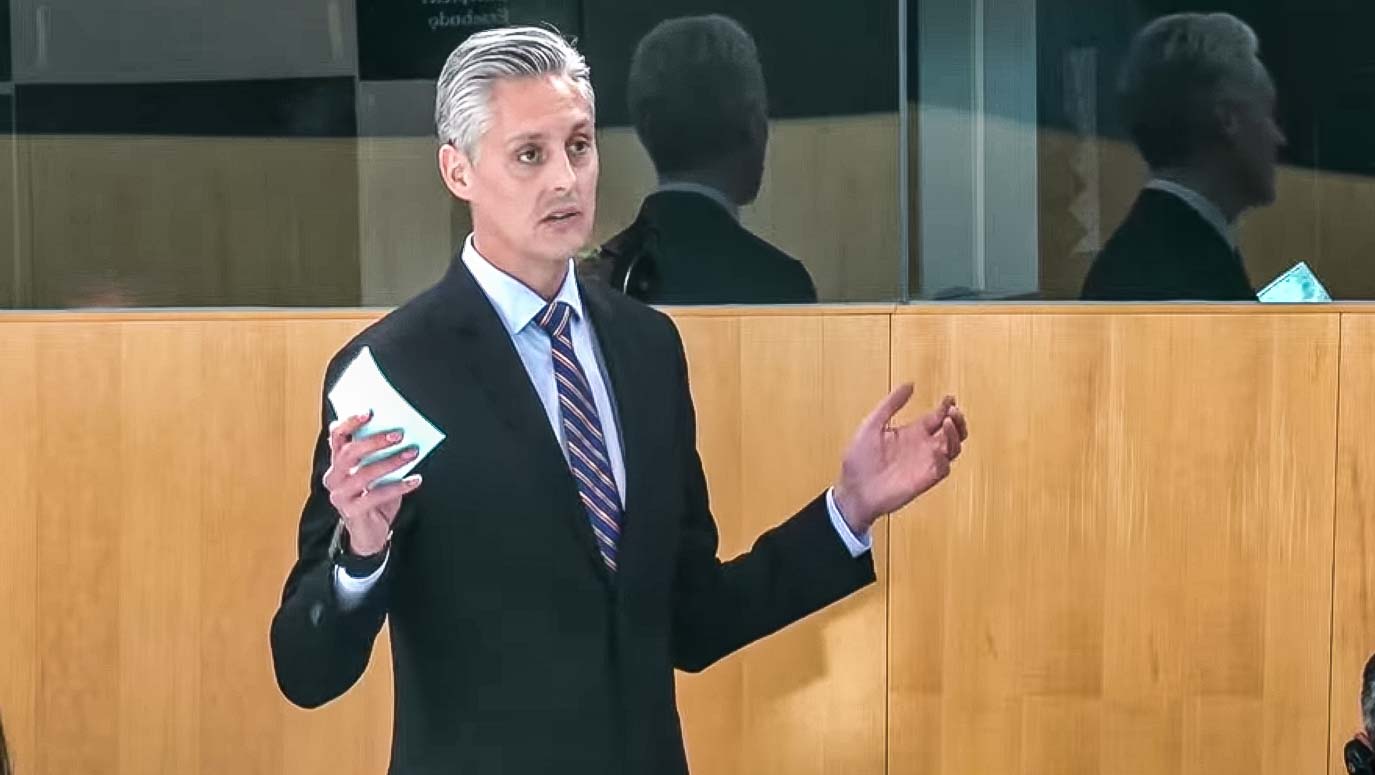Featured
Illegal drugs and deadly violence at ‘crisis’ levels, says Premier R.J. Simpson
The MLA for Hay River North says he also took on Justice Minister role for the ‘deadly serious issue’ of drug dealing in his hometown

Deadly drug deals – either settled with bullets or poisonous mixtures – are a major issue at “crisis” levels across the NWT, says Premier R.J. Simpson.
The Northwest Territories has been near to, or at the highest rate of hospital stays due to substance use in the country – more than four times the national rate.

Range Lake MLA Kieron Testart speaks in the NWT Assembly on June 5. (Image courtesy Assembly Livestream.)
This year, there have been assassination-type shootings in residential areas, plus other violent acts in Inuvik, Yellowknife and Hay River.
Simpson agreed with Range Lake MLA Kieron Testart, who stood in the NWT Assembly late Wednesday afternoon, noted that drug seizures are up 100-per-cent, and asked, “Does the Premier agree that this is a crisis that needs to be resolved?”
Replied Simpson: “I don’t like to use the term crisis but, in this situation, the influx of drugs, the increase in violent crime, the influx of handguns, I think that we are facing a crisis.”
“The reason I kept the Justice portfolio this term is because I’ve seen what happened in my community of Hay River, and I wanted to make sure that I was able to follow through on some of the initiatives that we began to start addressing this because it is a deadly serious issue.”
Testart noted the new Territorial Crime Reduction Unit in the proposed 2024-25 Budget is going to make a difference.
“The RCMP say it’s a game changer,” he said.
In her recent proposed Budget, Finance Minister Caroline Wawzonek announced the creation of a $1.3 million Territorial Crime Reduction Unit that will serve the entire territory with specialized resources to support disrupting illicit drug supply and enhancing enforcement targeting criminal networks.
And when it’s time to deal with dangerous situations, the RCMP Emergency Response Team will be enhanced with $372,000 now, and $744,000 annually in future budgets to provide advanced training and equipment.
This budget will also add four officers through the First Nations and Inuit Policing Program, and two additional general duty officers at the Fort Providence detachment.
MLA Testart asked when people start seeing a difference in crime rates and start feeling safer.
He said that over the last year, “my constituents and I have learned to brace ourselves when we check the local headlines because we’ve grown to expect a procession of drug busts, assaults, and murders each week.”
Simpson said where there’s a demand for drugs, there’s an influx of drugs and the root causes for the addictions need to be addressed.
“We are (starting to) seeing the impact of (existing) enhanced enforcement. Unfortunately, there’s also enhanced crime. So, it feels like a bit of an arms race right now.”
Just this week, the NWT’s Chief Public Health Officer issued another public health advisory for Hay River about drugs, as potentially lethal crack cocaine mixtures including with methamphetamine are now being detected.
Brown crack cocaine mixed with multiple other substances including fentanyl, norfentanyl, methamphetamine and benzodiazepine found in the town prompted today’s health advisory.
Hay River has detected benzodiazepine and fentanyl in other drugs, but the addition of methamphetamine is something new.
Also, on Tuesday, in the latest drug bust RCMP charged two with drug trafficking and other offences after searching a Hay River residence.
Two other Hay River men were released for a future court date, and a fifth person was released without charges.
The RCMP has developed specialized crime reduction units (CRUs), which are grounded in research that indicates that a small number of individuals are responsible for committing a large amount of crime.
The federal force believes police activities that have the time and resources to focus on those individuals will result in a lower crime rate, fewer calls for police service, and an increase in public safety.

An example of the type of evidence seized during an RCMP raid. This from a hotel room in Inuvik this past March. An Edmonton man has been charged. (Photo submitted by RCMP.)


